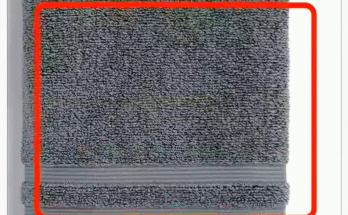
This post has been revised to include additional details from the Pentagon.
In a coordinated operation, seven B-2 Spirit bombers and more than 30 Tomahawk Land Attack Missiles, launched from an Ohio-class guided-missile nuclear submarine, struck three Iranian nuclear facilities located in Natanz, Isfahan, and Fordo, Pentagon officials confirmed Sunday.
“All of Iran’s critical nuclear enrichment sites have been completely and utterly destroyed,” President Trump declared during a Saturday night address from the White House.
The main air strike originated from Whiteman Air Force Base, Missouri, with the B-2 bombers embarking on a round-trip mission exceeding 24 hours. Early Sunday morning (Iranian local time), the aircraft deployed 14 GBU-57/B Massive Ordnance Penetrators on the facilities in Natanz and Fordo, according to General Dan Caine, Chairman of the Joint Chiefs of Staff, during a Pentagon briefing.
The GBU-57/B, commonly referred to as the “bunker buster,” is a 30,000-pound, 20-foot-long precision munition capable of penetrating over 100 feet of reinforced concrete. It is currently the only weapon in the U.S. or Israeli arsenal believed capable of destroying deeply buried underground uranium enrichment infrastructure.

During the operation, U.S. forces deployed approximately 75 precision-guided munitions, including 14 GBU-57 Massive Ordnance Penetrators 30,000-pound bunker-busting bombs marking the weapon’s first operational use, according to Caine during a Pentagon briefing.
A formation of seven B-2 bombers flew a long-range mission originating over the Atlantic, traversing the Mediterranean, and entering the Middle East. Their journey was supported by KC-135 and KC-46A Pegasus aerial refuelers strategically positioned along the route. Upon entering U.S. Central Command airspace, an unspecified number of fourth- and fifth-generation U.S. fighters joined the bombers en route to Iran. These fighters targeted surface-to-air missile systems ahead of the B-2s’ strikes on Iran’s fortified nuclear enrichment sites at Natanz and Fordo. Caine added that Iran’s air defenses had already been significantly degraded by sustained Israeli airstrikes since June 13.

On Sunday, Caine informed reporters that the U.S. employed high-speed suppression weapons to secure the airspace for its strike force. “Fighter aircraft executed preemptive suppression fires against potential Iranian surface-to-air missile threats to ensure the strike package’s safe transit,” he stated. “At this time, we are not aware of any hostile fire directed at U.S. forces during ingress.”
In a coordinated deception effort, a separate group of B-2 bombers flew westward from Whiteman Air Force Base across the Pacific. In total, over 125 aircraft were involved in the operation, including intelligence, surveillance, reconnaissance, and aerial refueling platforms. While it remains unclear whether any aircraft originated from the Carl Vinson Strike Group, Carrier Air Wing 2 deployed aboard the USS Carl Vinson (CVN-70) includes squadrons of F-35C Lightning II stealth fighters and EA-18G Growler electronic warfare aircraft, both of which specialize in suppressing enemy air defenses. A Navy spokesperson directed inquiries to the White House when contacted by USNI News.
Following the B-2 bombing runs, a U.S. submarine launched over two dozen Tomahawk cruise missiles at the nuclear facility in Isfahan. Caine did not specify the submarine involved, though the USS Georgia (SSGN-729)—capable of carrying more than 150 Tomahawks—had entered the region in September, according to prior USNI News reporting.
After the strikes, President Trump issued a call for peace via Truth Social, a sentiment echoed by Secretary of Defense Pete Hegseth during the Pentagon briefing.
“Conflict always carries uncertainty, but this operation was designed with deliberate limitations,” Hegseth said. “We’ve sent a clear message: this was targeted at Iran’s nuclear infrastructure and capabilities. That is the red line the President established and we’ve set their nuclear ambitions back. The opportunity for peace is now in Iran’s hands.”

As of Friday, the Carl Vinson Carrier Strike Group was operating in the North Arabian Sea, with the Nimitz Carrier Strike Group expected to arrive in the region over the weekend. In support of regional security operations, the U.S. Navy has also deployed two Arleigh Burke-class guided-missile destroyers to the Red Sea USS Forrest Sherman (DDG-98) and USS Truxtun (DDG-103).
Additionally, five ballistic missile defense-capable destroyers have been positioned in the Mediterranean Sea:
- USS Arleigh Burke (DDG-51)
- USS Thomas Hudner (DDG-116)
- USS The Sullivans (DDG-68)
- USS Paul Ignatius (DDG-117)
- USS Oscar Austin (DDG-79)
These ships are equipped to intercept ballistic missile threats, providing a defensive shield for Israel and U.S. military installations across the region.
Although Secretary of Defense Pete Hegseth commended the sailors aboard U.S. destroyers, submarines, and aircraft carriers for their role in the operation, it remains unclear whether any additional naval assets directly participated in the airstrikes. Brig. Gen. Caine acknowledged the involvement of support aircraft but did not provide further specifics.
Earlier in the week, Iranian leaders warned that U.S. military action could escalate the conflict. Supreme Leader Ayatollah Ali Khamenei cautioned that American strikes would cause “irreparable damage,” while Foreign Ministry spokesperson Esmail Baghaei declared that such actions could spark “an all-out war in the region.”
Beyond its naval posture, the United States maintains a force of approximately 40,000 troops across the Middle East, stationed in Iraq, Kuwait, Bahrain, Jordan, Syria, Qatar, and other strategic locations.
Meanwhile, Iran-aligned Houthi militants in Yemen issued fresh threats on Saturday, pledging to resume attacks on U.S. vessels in the Red Sea should the U.S. continue its bombing campaign against Iran. Mahdi Al-Mashat, president of the Houthis’ Supreme Political Council, told the Houthi-run Saba news agency that they would oppose any aggression toward Islamic nations.
“Any hostile act targeting any Islamic country will be opposed and confronted by us,” Al-Mashat stated. “This is our position, and we have previously announced it.”
The Houthi military wing echoed this sentiment, vowing to target U.S. ships in response to any strike on Iran. Houthi officials are expected to deliver a formal speech later Sunday outlining any forthcoming military actions against U.S. interests.

Kata’ib Hezbollah, an Iranian-backed militia based in Iraq, has also issued threats in response to the U.S. strikes on Iran. According to Mohammed Albasha, a Yemen expert and author of the Basha Report, the group warned it would target U.S. interests and military installations across the region.
“Now that the U.S. has struck Iran, I believe the Houthis, Kata’ib Hezbollah, and other Iranian-aligned armed factions are most likely to retaliate against U.S. interests,” Albasha said in an email to USNI News. “At the very least, we should anticipate symbolic retaliation, similar to what followed the assassination of Qassem Soleimani. While I don’t foresee a full-scale regional war, a pattern of tit-for-tat strikes is highly probable. We’ve entered uncharted territory tonight, and no outcome can be dismissed.”
On Saturday night, President Trump issued a stark warning against any Iranian counterattack.
“ANY RETALIATION BY IRAN AGAINST THE UNITED STATES OF AMERICA WILL BE MET WITH FORCE FAR GREATER THAN WHAT WAS WITNESSED TONIGHT,” he wrote on social media.
In Tehran, the Iranian Parliament voted to close the Strait of Hormuz, a critical global shipping lane, in a provocative move. However, the final decision rests with the Supreme National Security Council, according to a report from Reuters.
Despite the growing tensions, Danish shipping giant Maersk, which had previously rerouted vessels away from the Red Sea amid Houthi attacks on commercial shipping, stated it plans to continue sailing through the Strait of Hormuz, per comments shared with Reuters as of Sunday.


